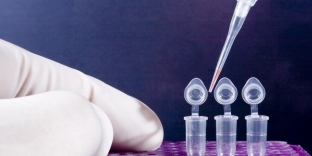Some oral diseases are treated with antibiotics. But the bacterial flora in the oral cavity can be resistant to some groups of antibacterial drugs. Modern methods of molecular diagnostics in dentistry open up new opportunities in the study of the etiology and pathogenesis of oral diseases. After all, the identification of little-studied bacterial organisms that contribute to the development of pathological processes in the tissues of the maxillofacial region will be of great benefit in the treatment of diseases of the oral cavity.
Universal primers – kind of molecular diagnostics
Today, universal primers characterizing the entire microbial biocenosis are used as molecular diagnostics. To do this, use the method of cultivation. Due to the objective limitations of the PCR method and immunochemical analysis, it is necessary to test primers and antibodies on a pure culture of bacteria. After such a check, it is possible to use new drugs in the molecular diagnosis of periodontitis and other pathologies of the oral cavity.
Antibiotics are often used in the treatment of inflammatory periodontal disease.
However, there is a problem, which consists in choosing a group of antibacterial agents, monitoring their effectiveness and identifying bacterial resistance to the assigned group of antibacterial drugs. Such problems can be solved with the help of molecular diagnostics.
Since the prescription of antibacterial drugs is often made without taking into account the above factors, the introduction of molecular diagnostics, in particular PCR, is a rather urgent issue in clinical dentistry.
Methods of molecular diagnostics in dentistry:
- universal primers;
- PCR;
- detection of amplification products.

The role of molecular diagnostics in the study of genes
The use of molecular diagnostic methods contributes to the development of research into the study of genes that are resistant to antibiotics. For example, PCR has been used to identify DNA loci that are resistant to erythromycin and tetracycline in anaerobes. Topical administration of tetracycline may promote the emergence of PC bacteria that are resistant to this drug. According to some studies, approximately 12% of oral bacteria are resistant to tetracycline drugs.
Equally interesting results were obtained from studies of dental plaque and saliva samples obtained from 20 healthy adults who had not taken antibiotics for 3 months. Eight classes of tetracycline resistance genes have been identified that encode a ribosomal protein. The resistance genes of Gram-negative bacteria are localized throughout the genome and are associated with large translocating plasmids. Bacterial resistance genes are placed on small transferable plasmids.
Molecular diagnostics reveals the location of antibiotic resistance genes
Some bacteria have been shown to spread tetracycline resistance genes via transposons.
It was found that many types of bacteroids have a large number of chromosomal elements with a tetracycline resistance gene. These elements are built into the chromosome of bacterioids and are independently transferred from the donor chromosome to the recipient chromosome.
Thus, the study of the resistance of the microbial flora of the oral cavity to antibacterial drugs is an urgent and priority area in dentistry. Molecular diagnostics is of great importance in this direction.






Add a comment